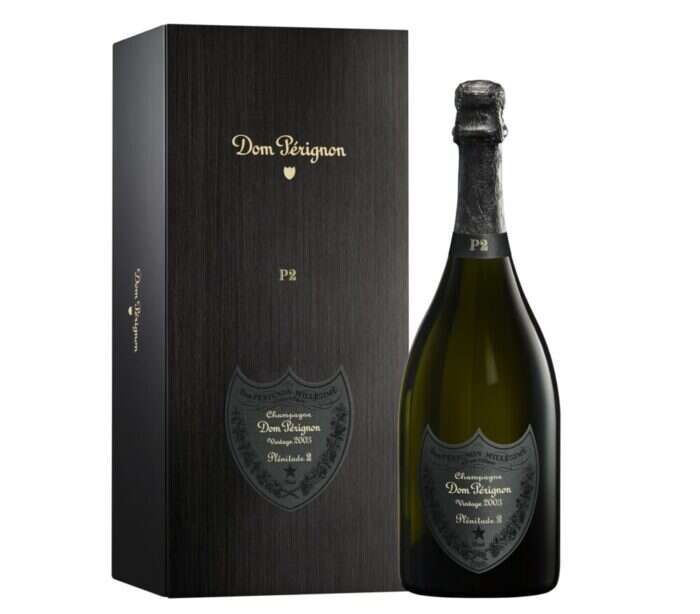As a vintage-only champagne, Dom Pérignon must meet the challenges of every year. While many Champagne houses blend wines from different years to achieve a consistent house style that tastes the same year after year, Dom Pérignon exclusively uses grapes from a single vintage. The result is that every vintage is different. They capture a moment in time and fully express the nuances of that year.
This also means that its winemakers cannot rely on reserve wines from previous vintages to balance ruined crops or overripe grapes. Every year is a race against time to begin to harvest at just the right moment and to source the best possible combination of grapes from across Champagne. Vincent Chaperon, the chef de cave, tells Elite Traveler: “We owe so much to nature; it is the very source of our vintages. Dom Pérignon is an unpredictable combination of the most fundamental nature and the most elaborate culture.”
The weather in 2012 was unpredictable, swinging from freezing spring frosts to summer heatwaves, with heavy rain and hailstorms in between. These extremes produced a wide variety of grapes for Dom Pérignon to choose from. Despite the inclement weather, the grapes were superb. This allowed Chaperon to bring the best of all parts of the region into the blend.
[See also: The Story Behind the Challenging Dom Pérignon 2010 Vintage]

The Dom Pérignon 2012 vintage was borne from a year of unpredictable weather / ©Dom Pérignon
This diversity also means that assemblage, or blending, is of paramount importance to balance the wine and to create the best possible vintage. This year, Dom Pérignon was able to source fruit from vineyards across Champagne, pulling out the best characteristics of each. The Chardonnay brings acidity and a long finish, while Pinot Noir provides the fruit and structure.
The Dom Pérignon 2012 vintage has notes of blossom, apricot, and citrus on the nose with minerality and white pepper. On the palate, it has the bright, high levels of acidity and the rich fruit flavors that Dom Pérignon is known for. There are hints of ginger and toastiness, too. Chaperon says this vintage “literally explodes” on the palate and perfectly balances freshness and generosity, two of the maison’s hallmarks.
2003 Plénitude 2
In addition to the wonderful 2012 vintage, Dom Pérignon also released the 2003 Plénitude 2, or P2. This is the second release of the 2003 vintage. In 2011, the majority of the 2003 vintage was bottled and sold. However, Dom Pérignon holds back a select number of bottles to undergo additional maturation. While most bottles of Dom Pérignon age for seven to eight years, the P2 ages for around 17 years.
When champagne ages, it remains in contact with dead yeast cells, called lees, that are a byproduct of the secondary fermentation that gives champagne its bubbles. The extended lees contact results in rich brioche and pastry notes. The extra aging also lets the flavors develop in unique ways. Dom Pérignon describes this as elevation, a second life for the champagne. The wine reaches new heights and gains more depth of flavor thanks to the 17 years spent in the bottle.

It was in 2003 that the dramatic effects of climate change in Champagne first became undeniable / ©Pascal Montary
It was in 2003 that the dramatic effects of climate change in Champagne first became undeniable. The spring was marked by a severe frost that damaged 70% of the Chardonnay harvest in the Côte des Blancs, and August brought a historic heatwave that led to the earliest harvest in the region since 1822. Since then, Champagne has continued to experience extreme weather events that have created unpredictable vintages, making responsible viticulture increasingly important to the region.
“We’re reinventing our vine-growing and winemaking to continue minimizing our impact on the climate,” says Chaperon. “We are permanently reducing our energy at the source. This includes everything from investing in electric tractors to experimenting with ways to recover the carbon emitted during our fermentation process. More than ever, we promote biodiversity in the vineyard and consider the vine not as a monoculture but as a complex and balanced ecosystem we have to respect and accompany seamlessly.”

Most bottles of Dom Pérignon age for seven to eight years, but the P2 ages for around 17 years / ©Dom Pérignon
The heat in 2003 produced ripe and concentrated grapes, which have been compared to the famed 1947, 1959, and 1976 vintages. This required a rather bold approach to its winemaking. Dom Pérignon allowed the juice to oxidize in the press, which softened the sharp tannins. The chardonnay was ultra-ripe, characteristic of more southern regions in France, not the style typically cool-climate Champagne.
To balance it, Dom Pérignon increased the amount of pinot noir in the blend — the first, but not the last, time this would be necessary. This year was the beginning of the hard work of balancing the intensity of the wine created by the heat with freshness, which can quickly disappear as the grapes ripen.
The 2003 P3 is a remarkable achievement. Chaperon says the wine opens in a spiral of notes, beginning with lime, apricot, flowers, and candied raspberry and fig. The palate is full of ashy minerality and salinity, with an “elegantly bitter finish.”
Although they are a decade apart, these two vintages perfectly illustrate the challenges and potential of Champagne today. We have no doubt that Dom Pérignon will boldly conquer whatever comes next.










